Abstract
This article presents evidence that in 1983 excess demand was a prevailing characteristic of nursing home care markets in Wisconsin, a state with one of the highest bed to elderly population ratios. It further shows that excess demand is the source of at least three types of error in use-based estimates of the determinants of the need for nursing home care. First, if excess demand is present, estimates of the determinants of Medicaid use may simply represent a crowding out of Medicaid patients, driven by the determinants of private use. As a result, factors associated with greater overall need in an area will be correlated with fewer Medicaid patients in nursing homes, ceteris paribus. Second, estimates of the substitutability of home health care for nursing home care may be misleadingly insignificant if they are based on the bed supply-constrained behavior of Medicaid-eligible subjects. Third, because the determinants of bed supply become the determinants of overall use under excess-demand conditions, the determinants of use will reflect, to some extent, the nursing home's desire for profits. Because profitability considerations are reflected in use based estimates of need, these estimates are likely to be misleading.
Full text
PDF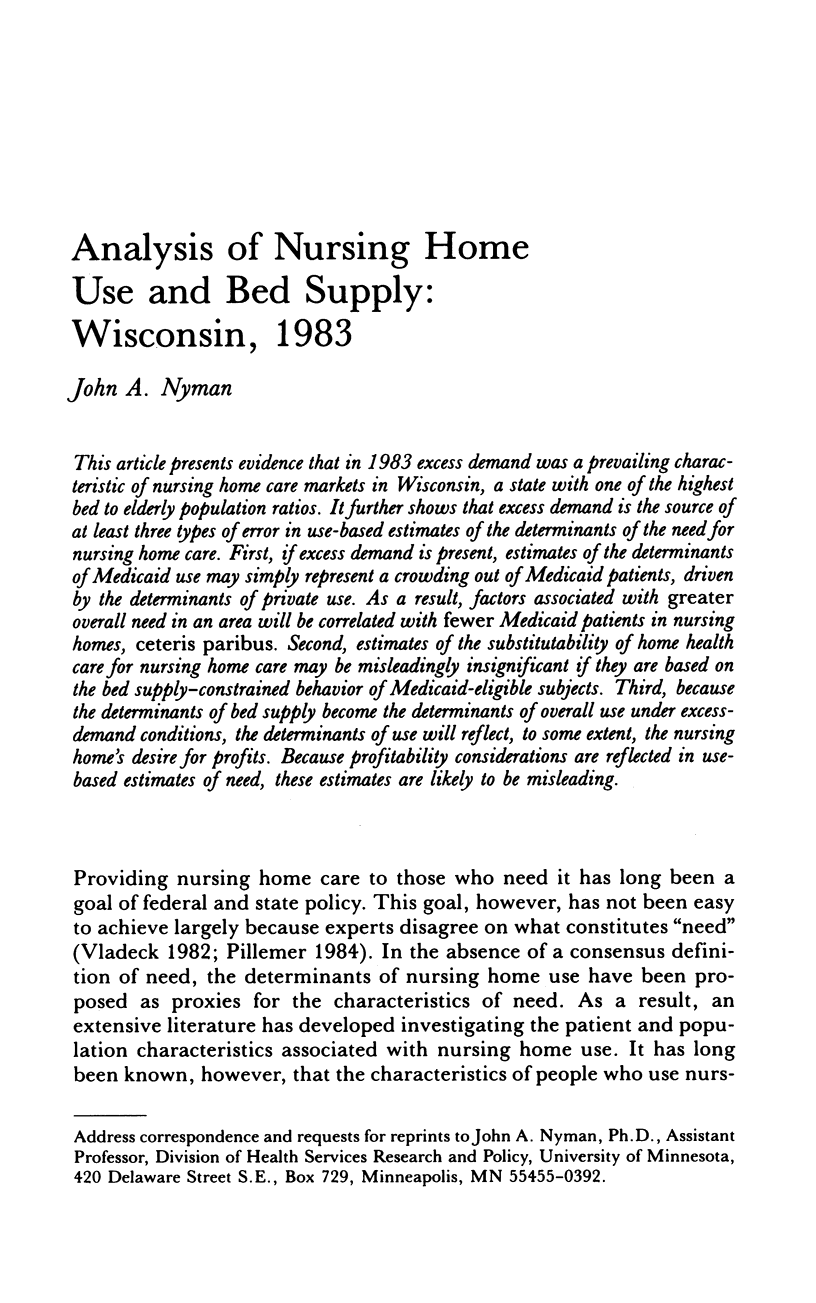
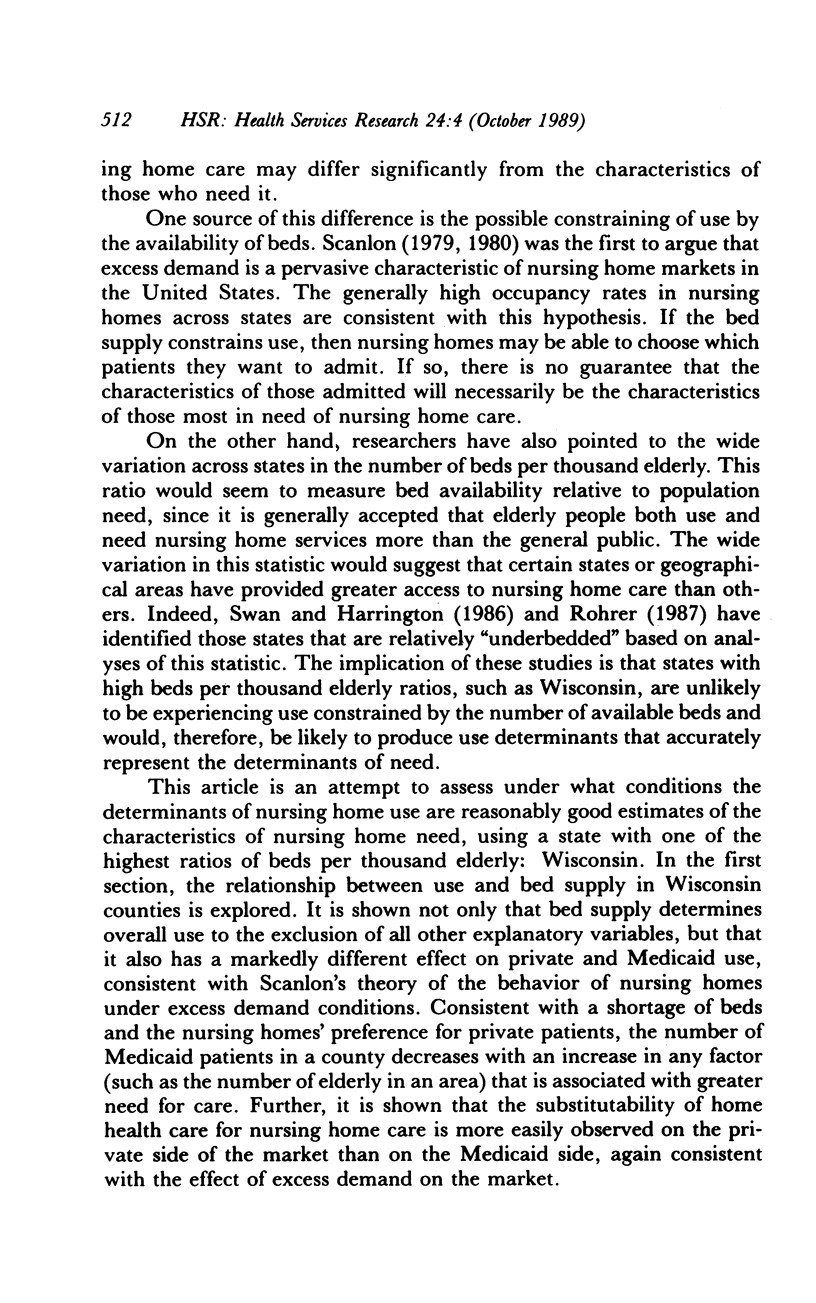
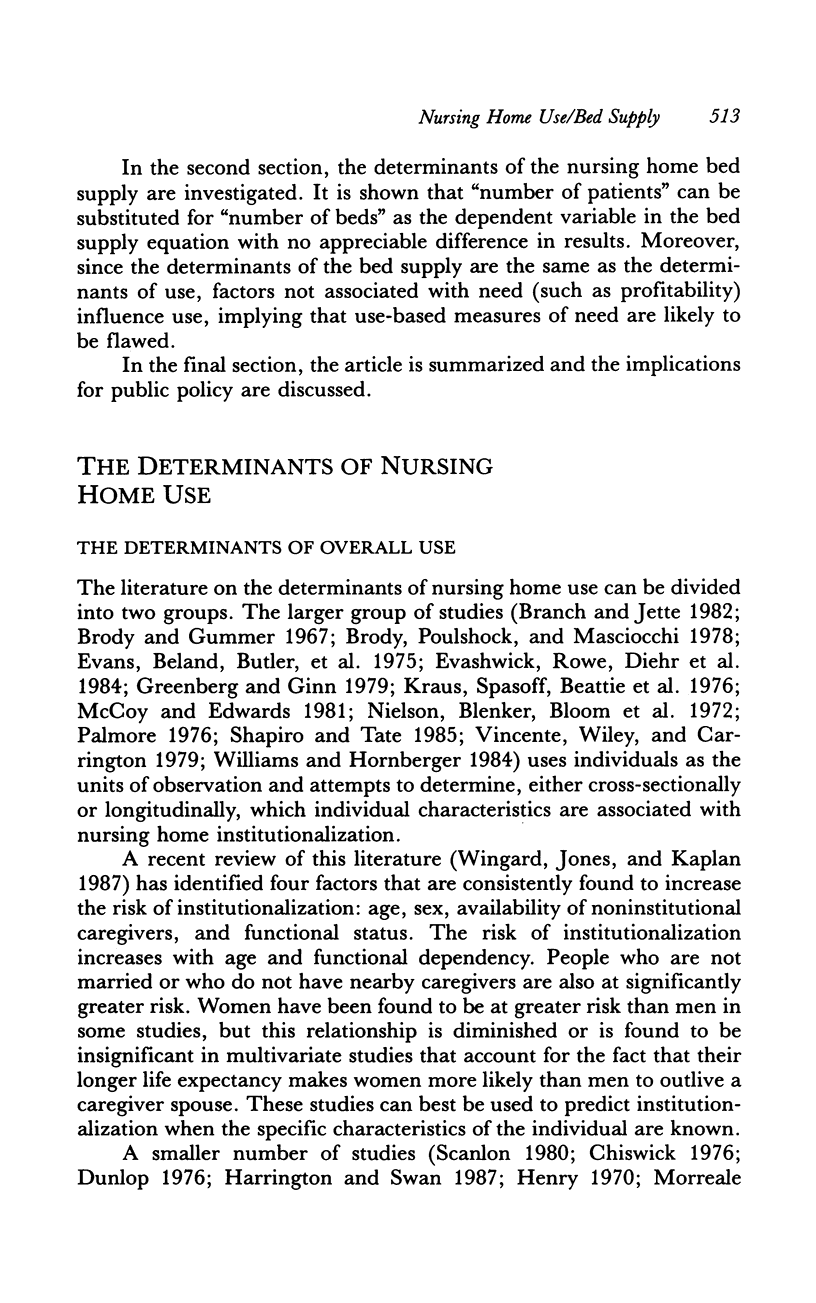


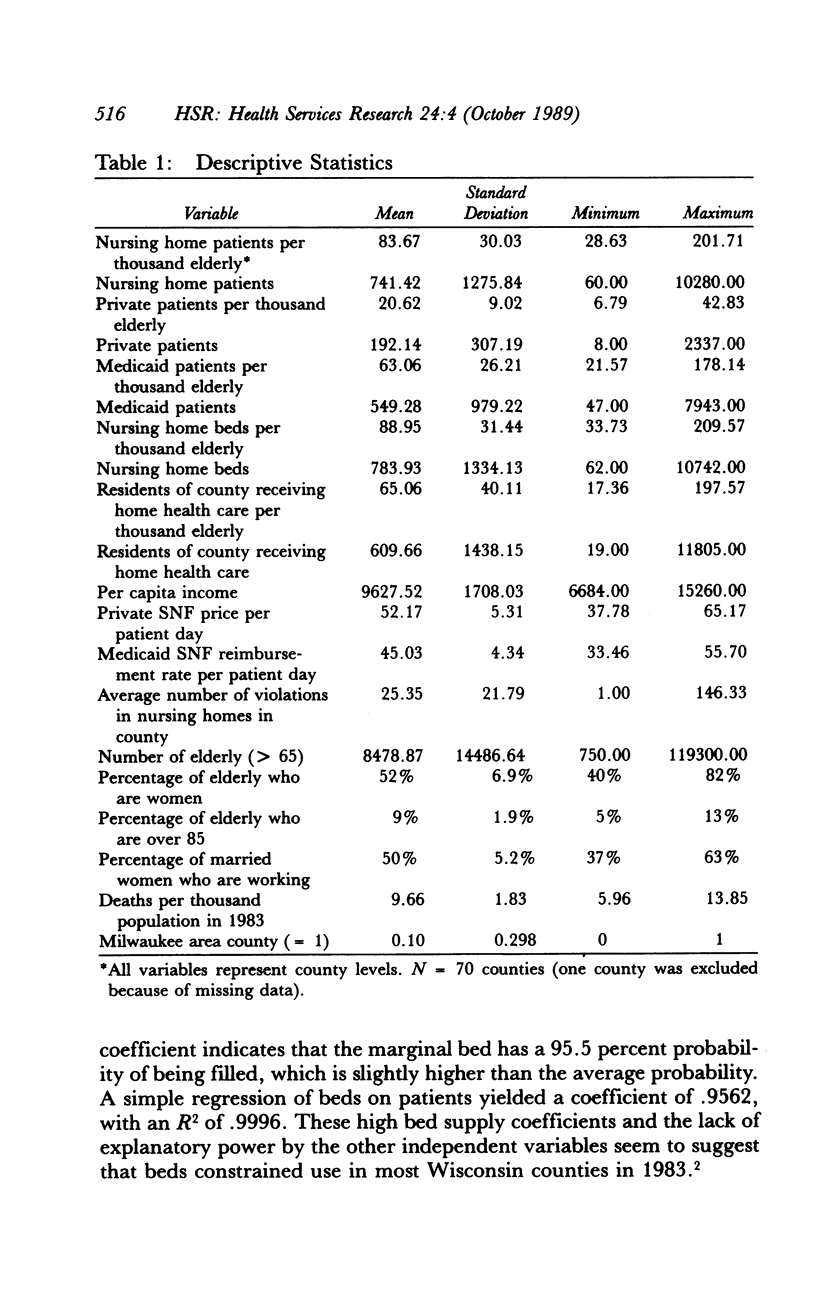

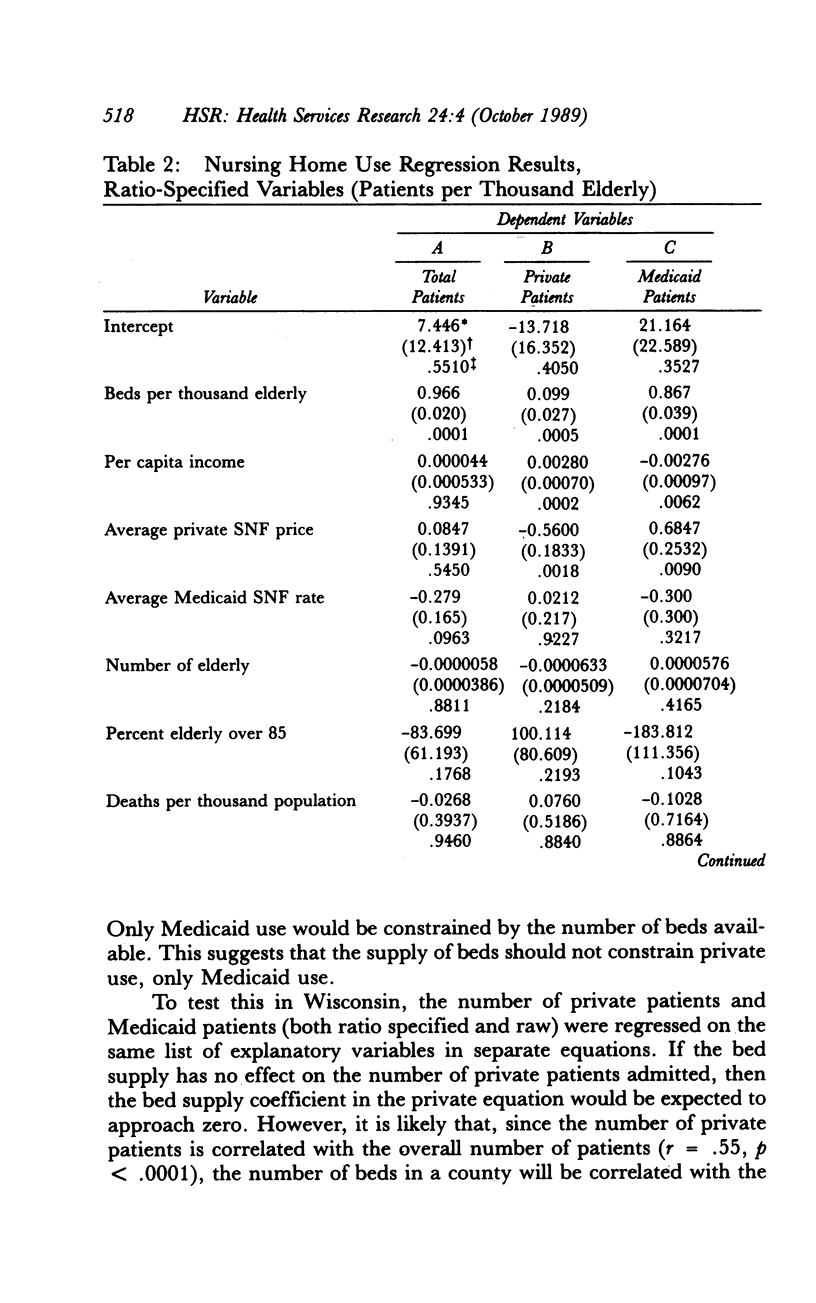
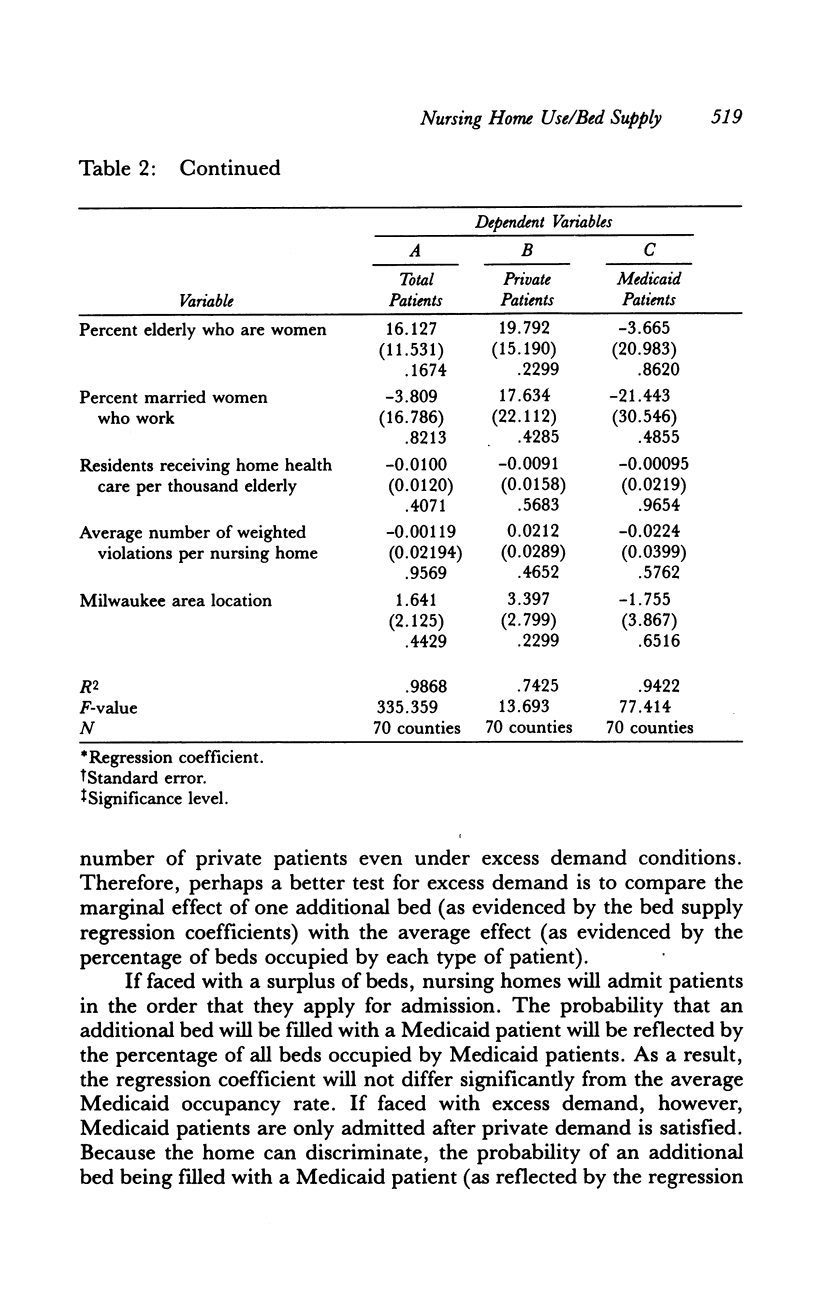

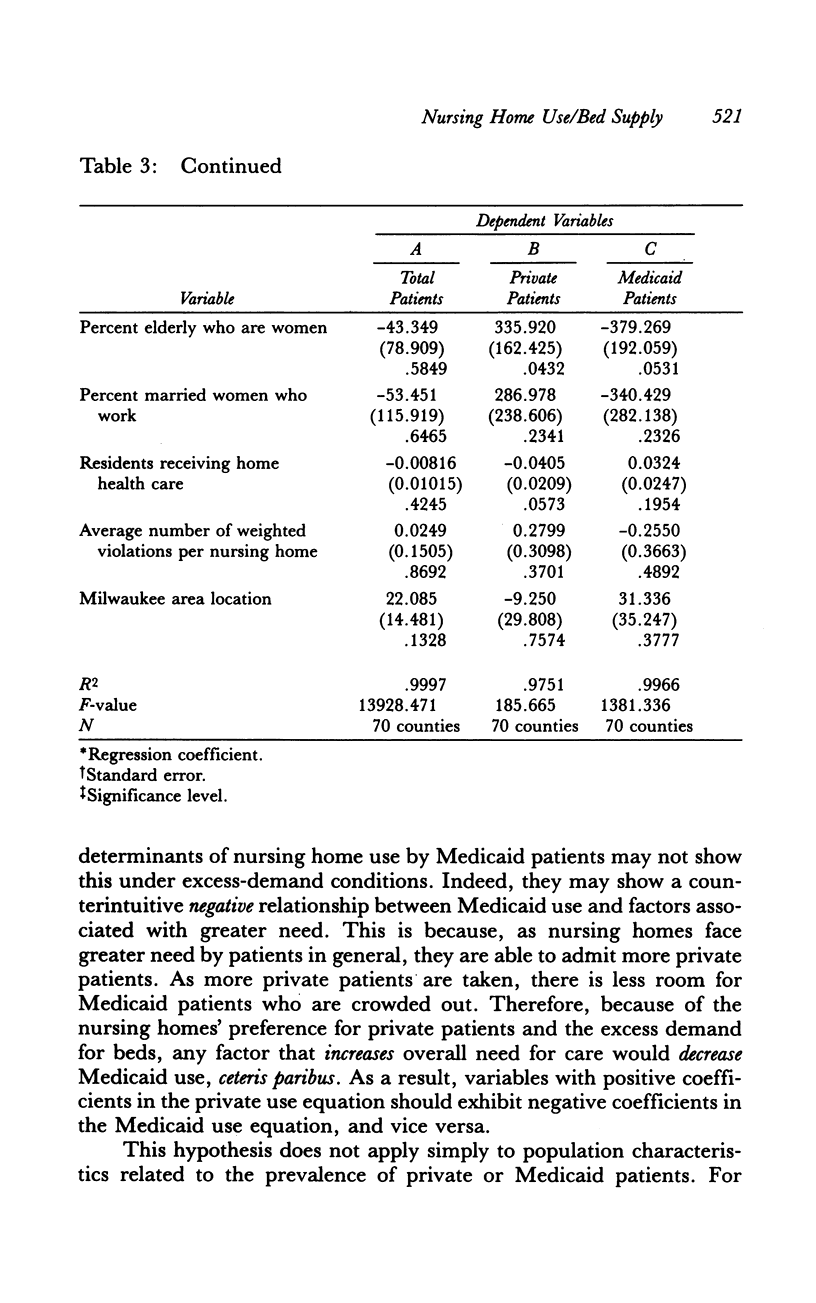


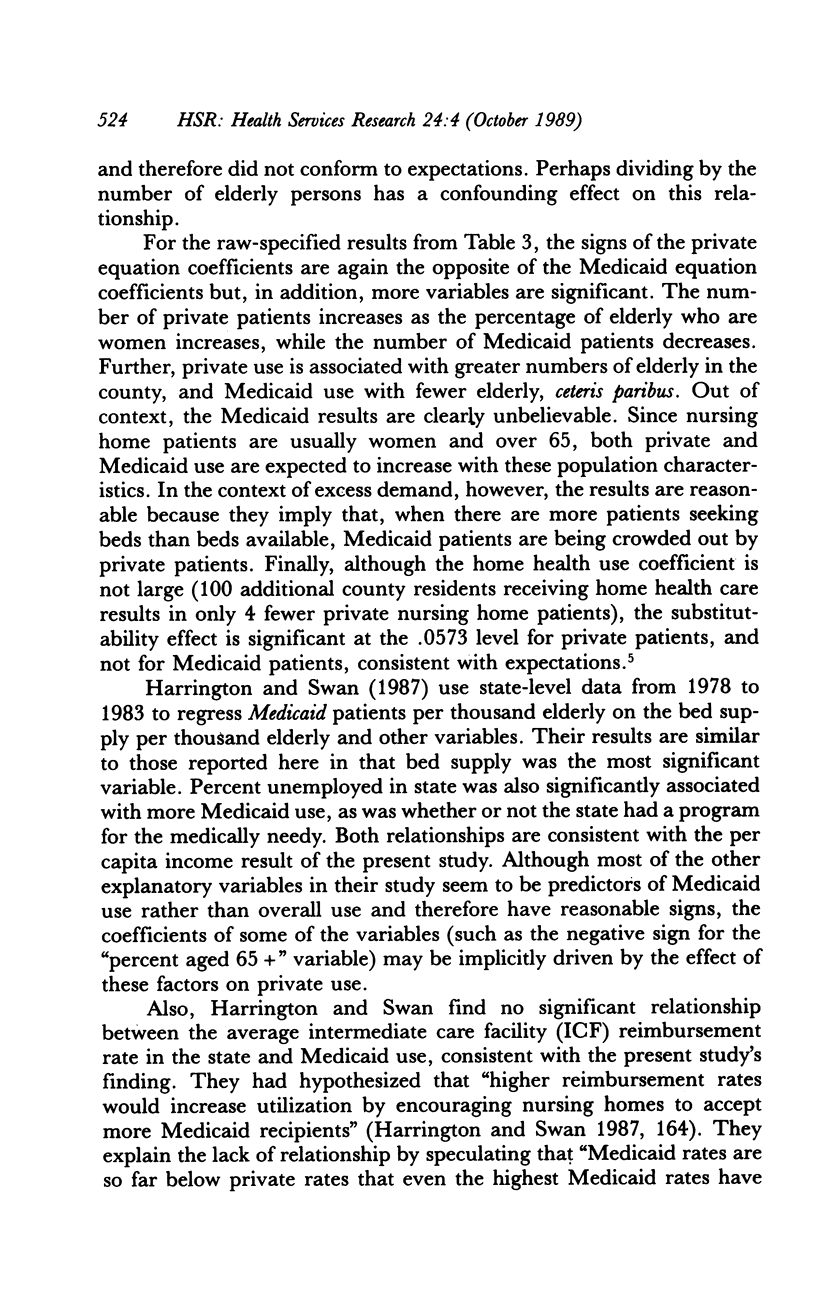
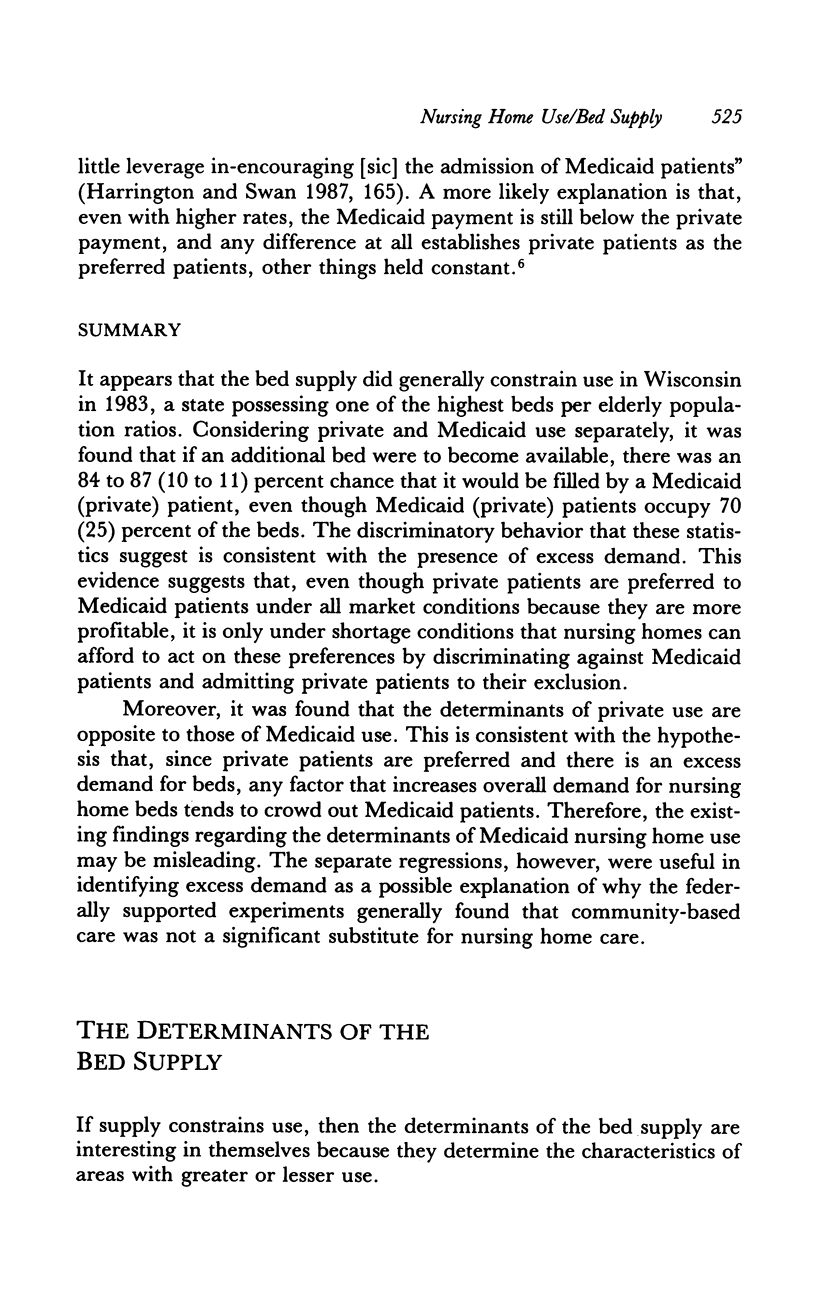
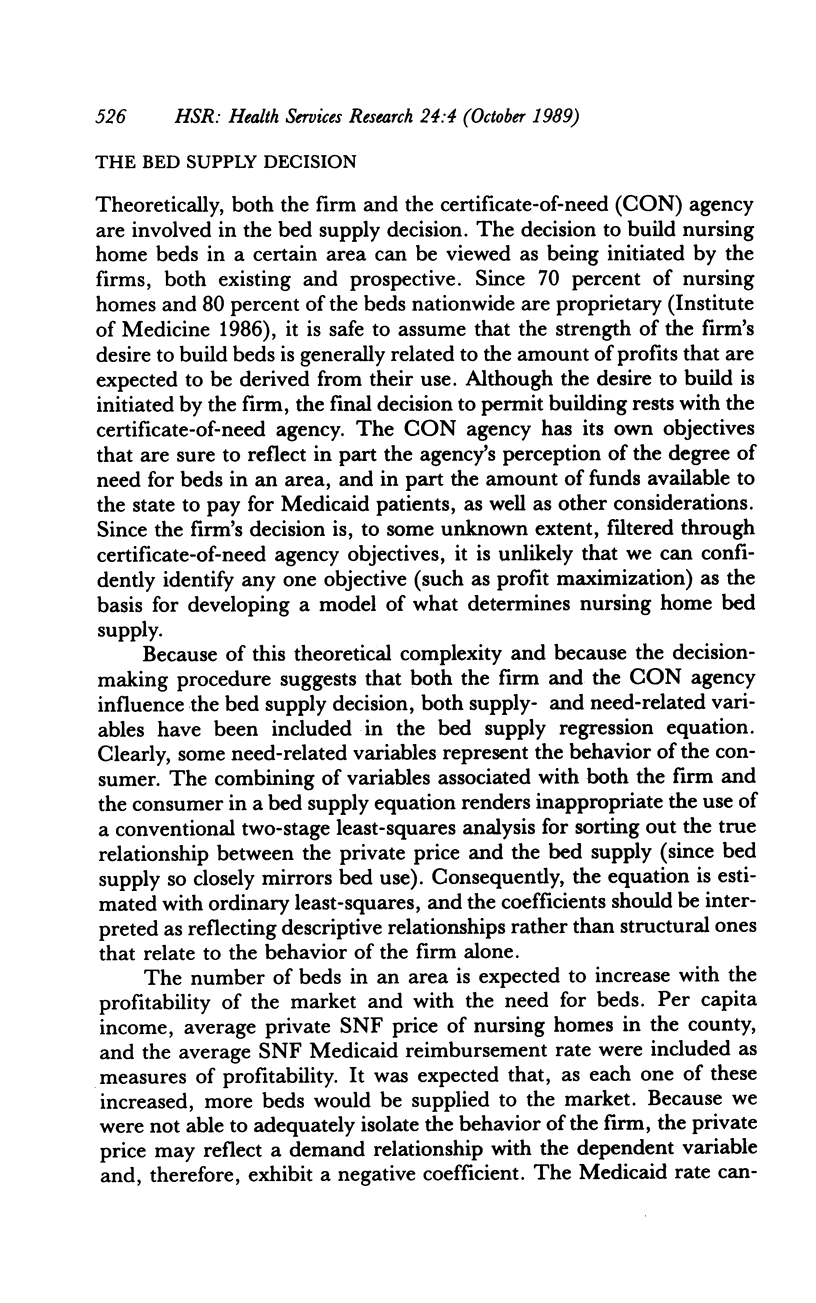
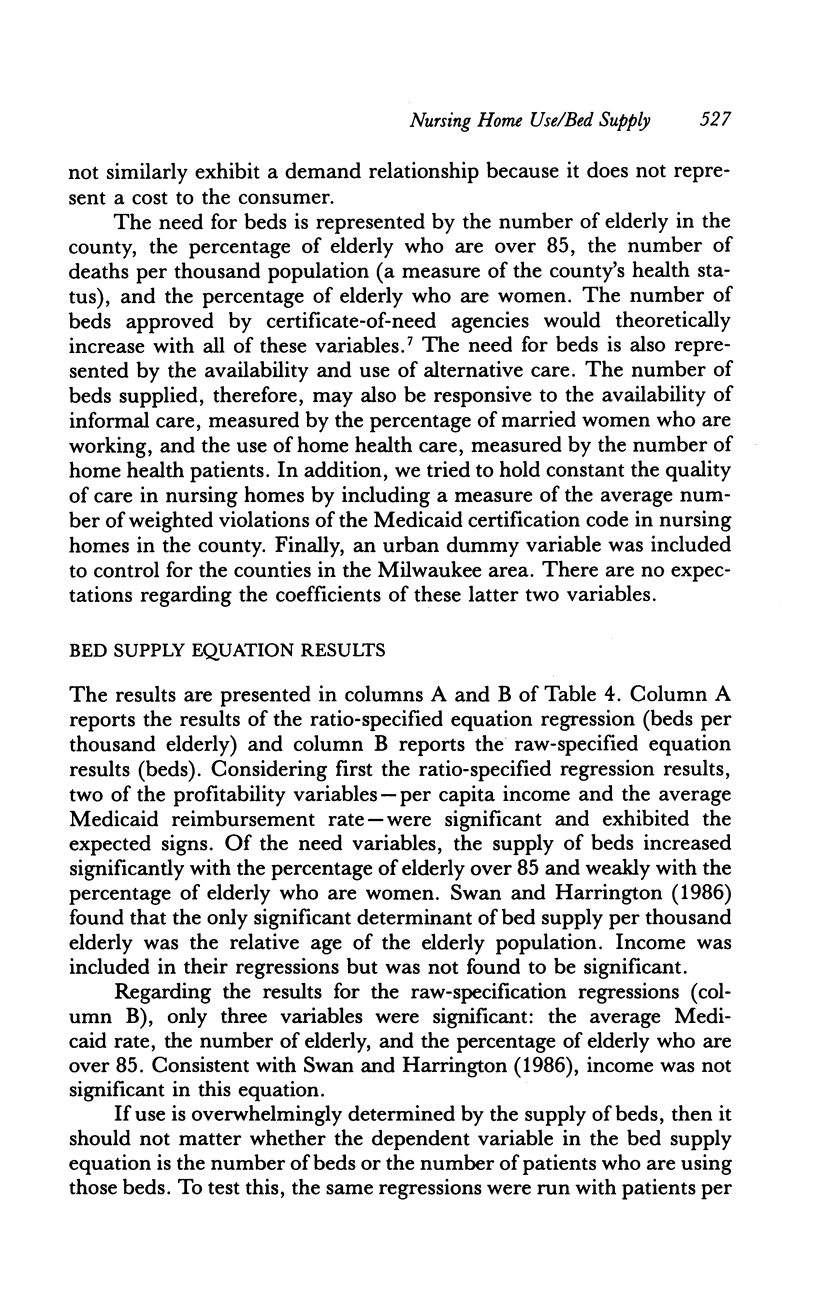

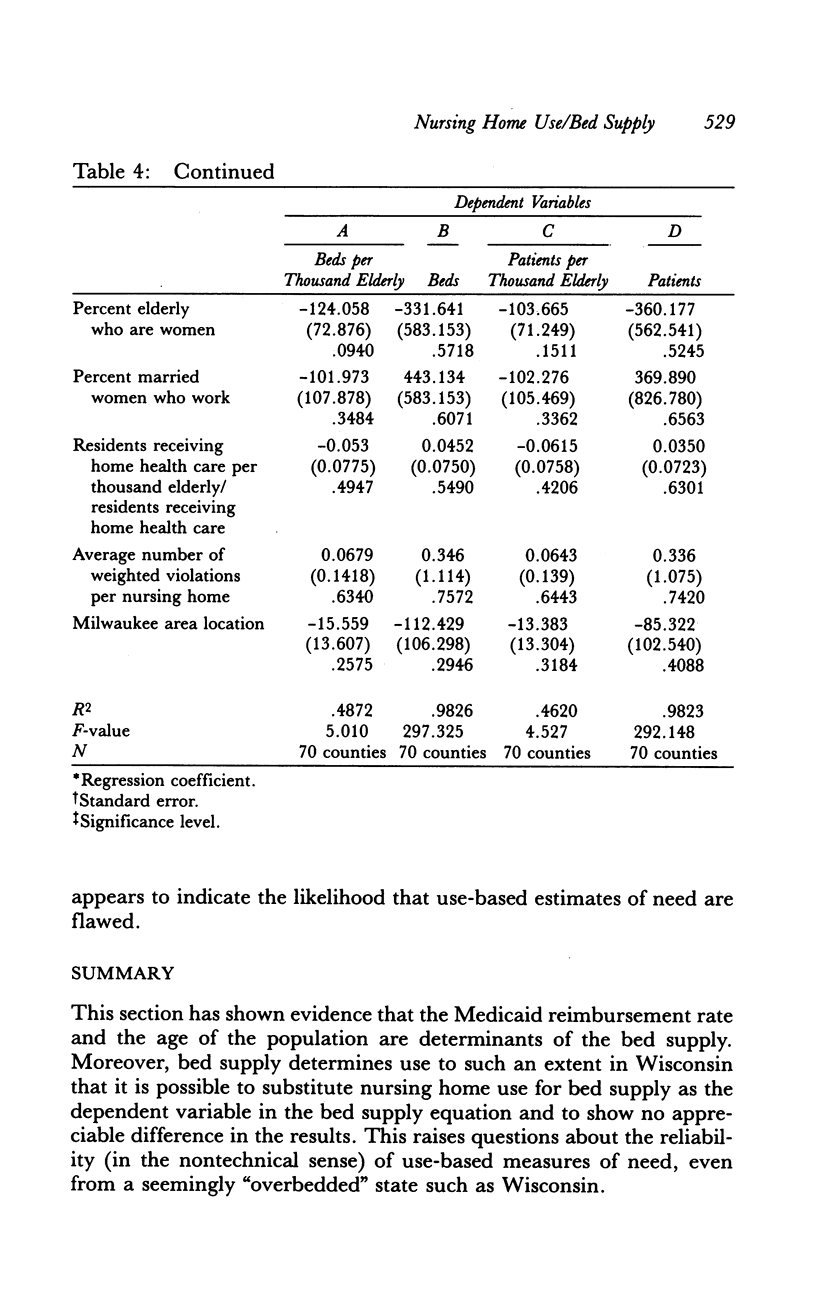
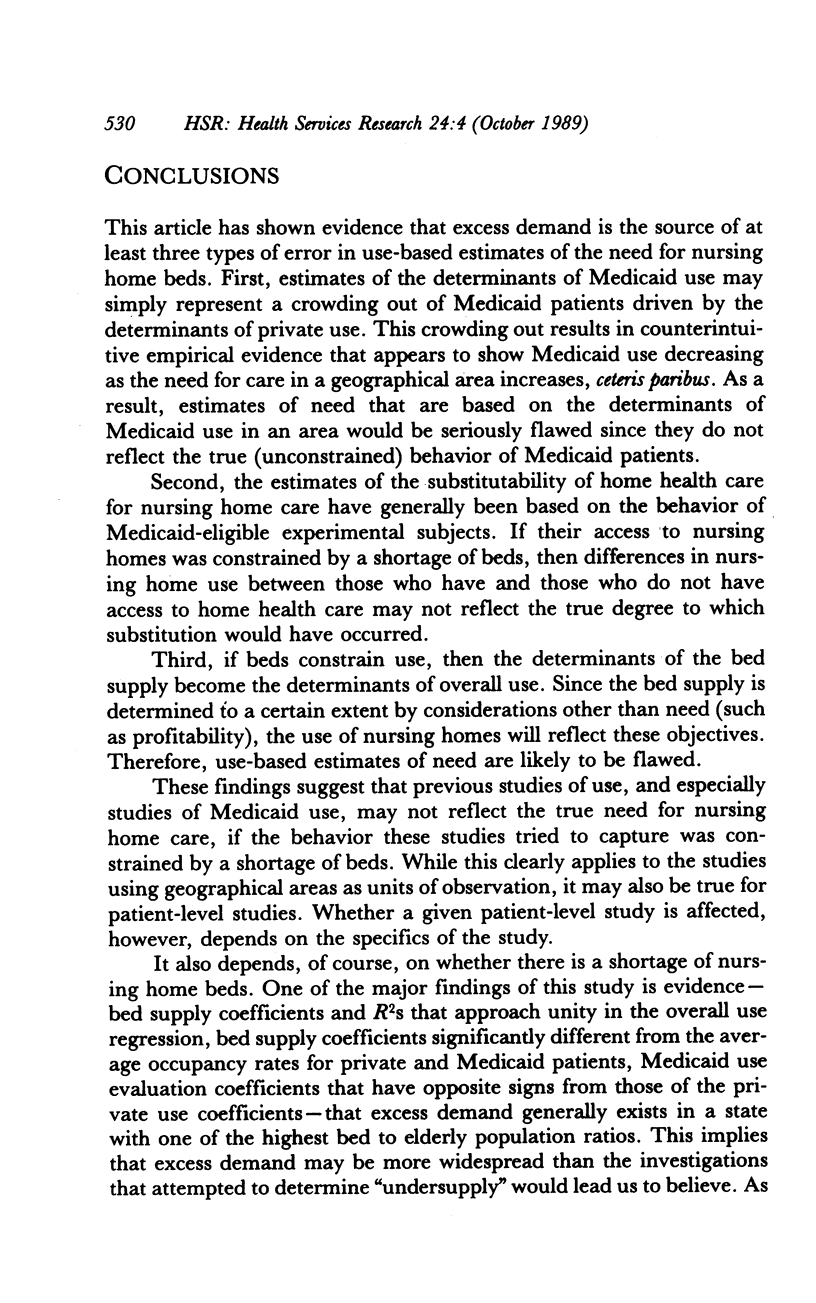
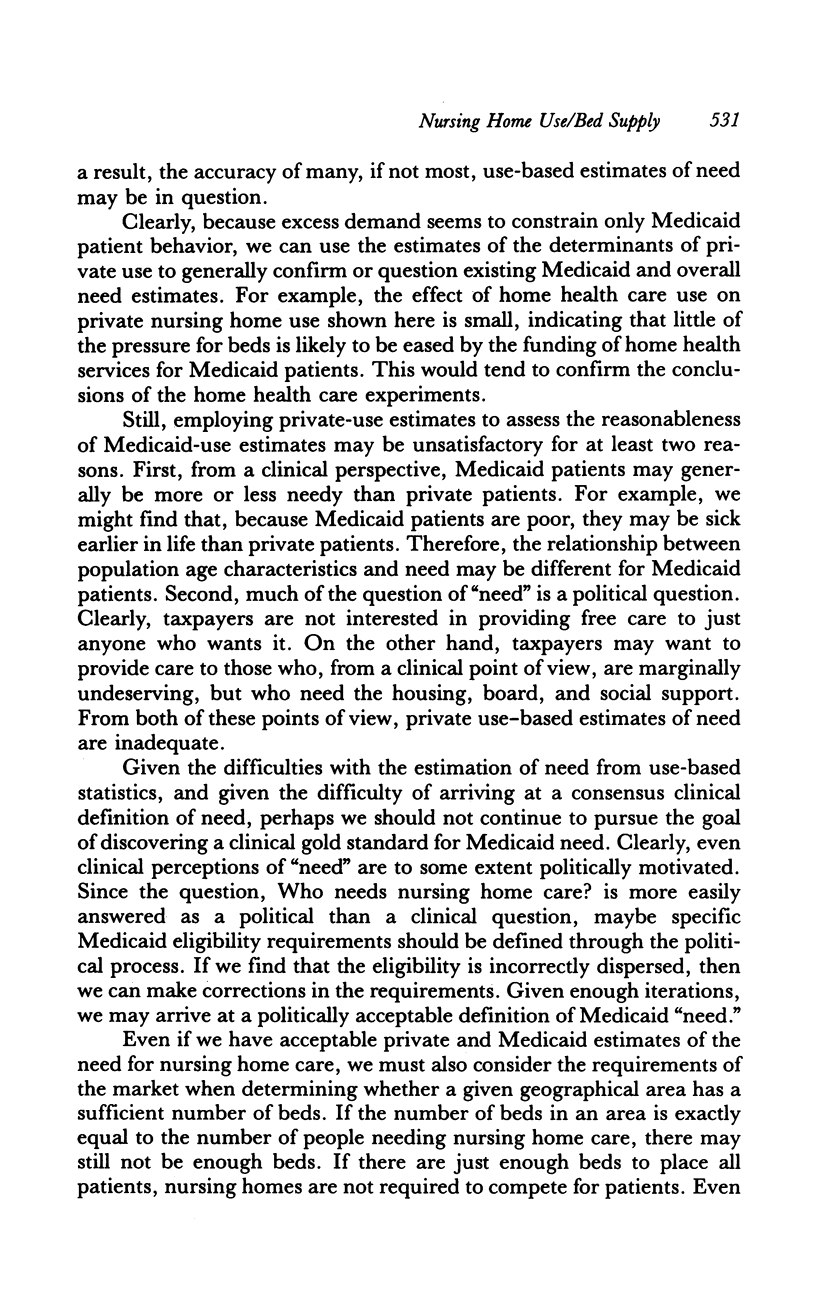
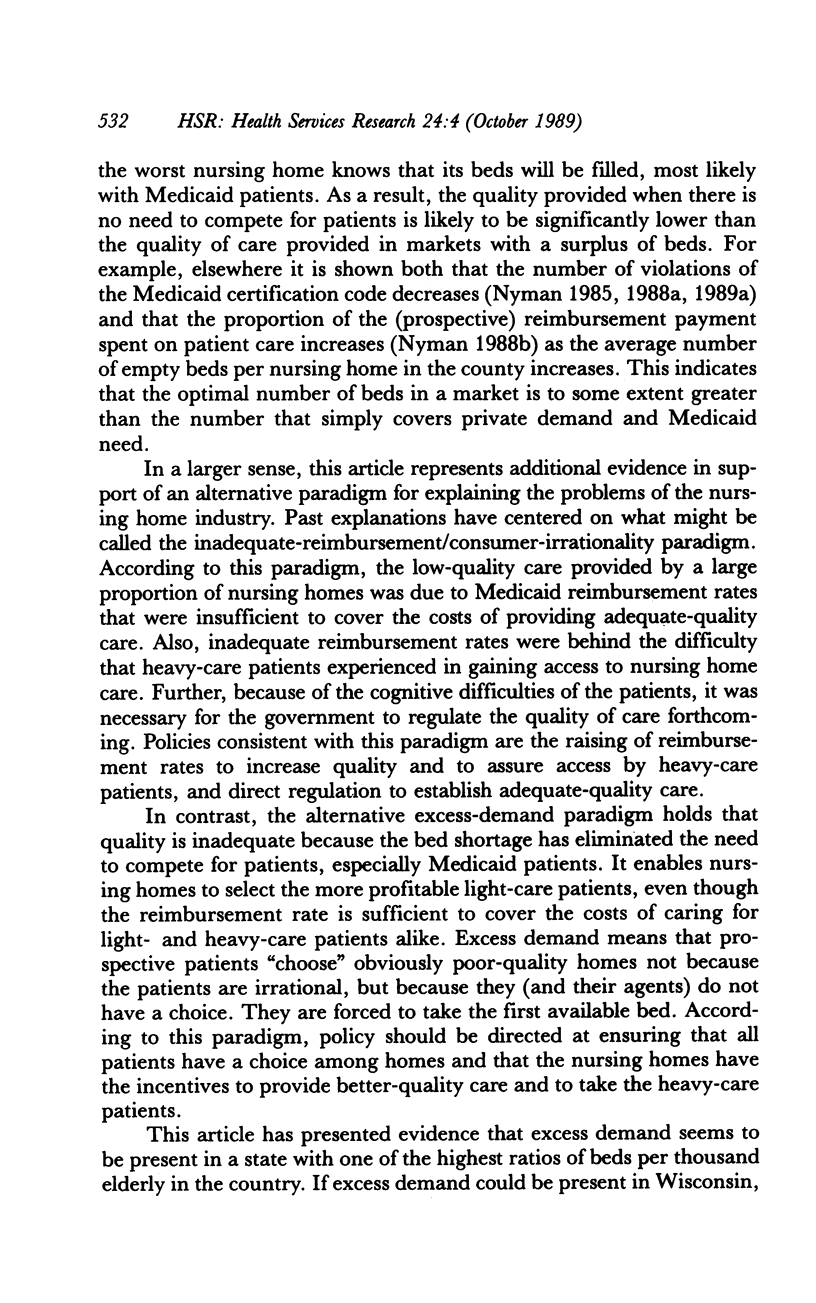
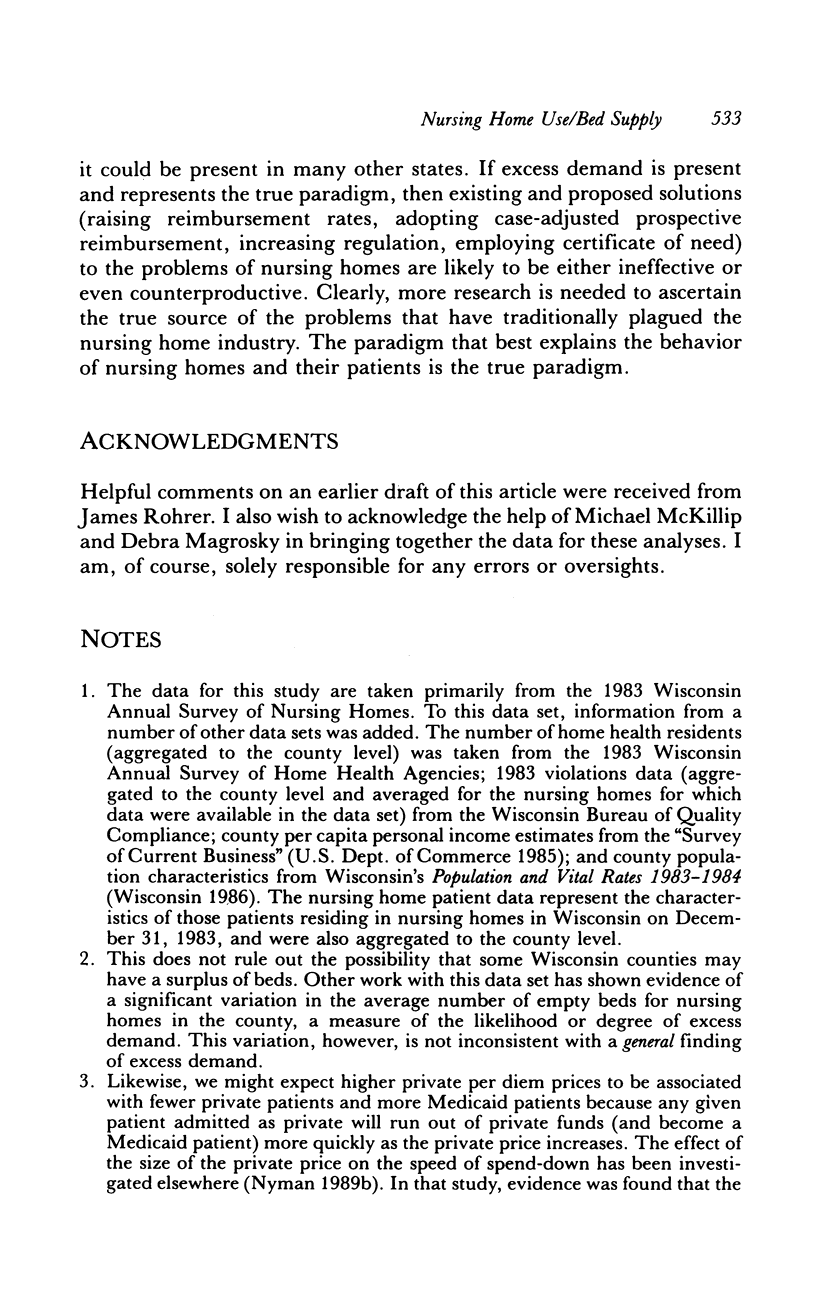
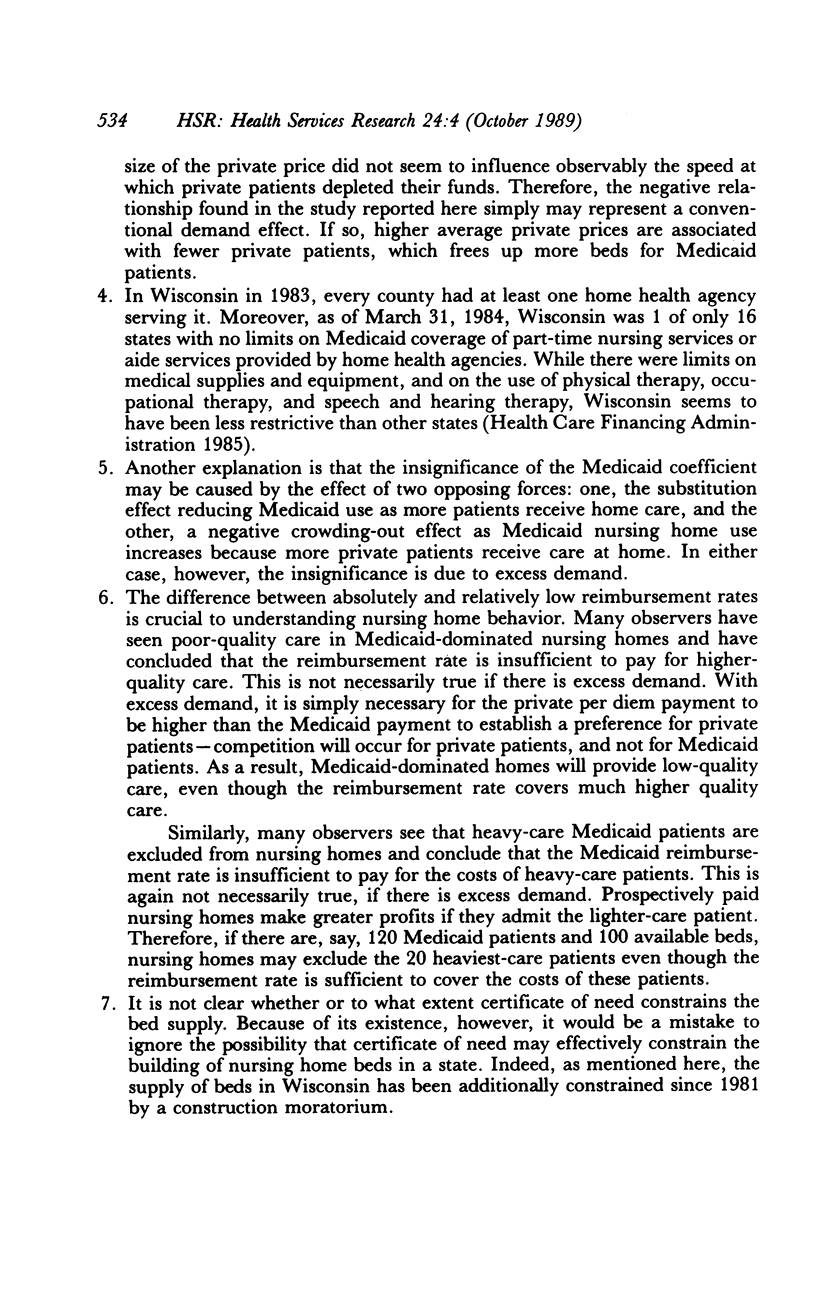
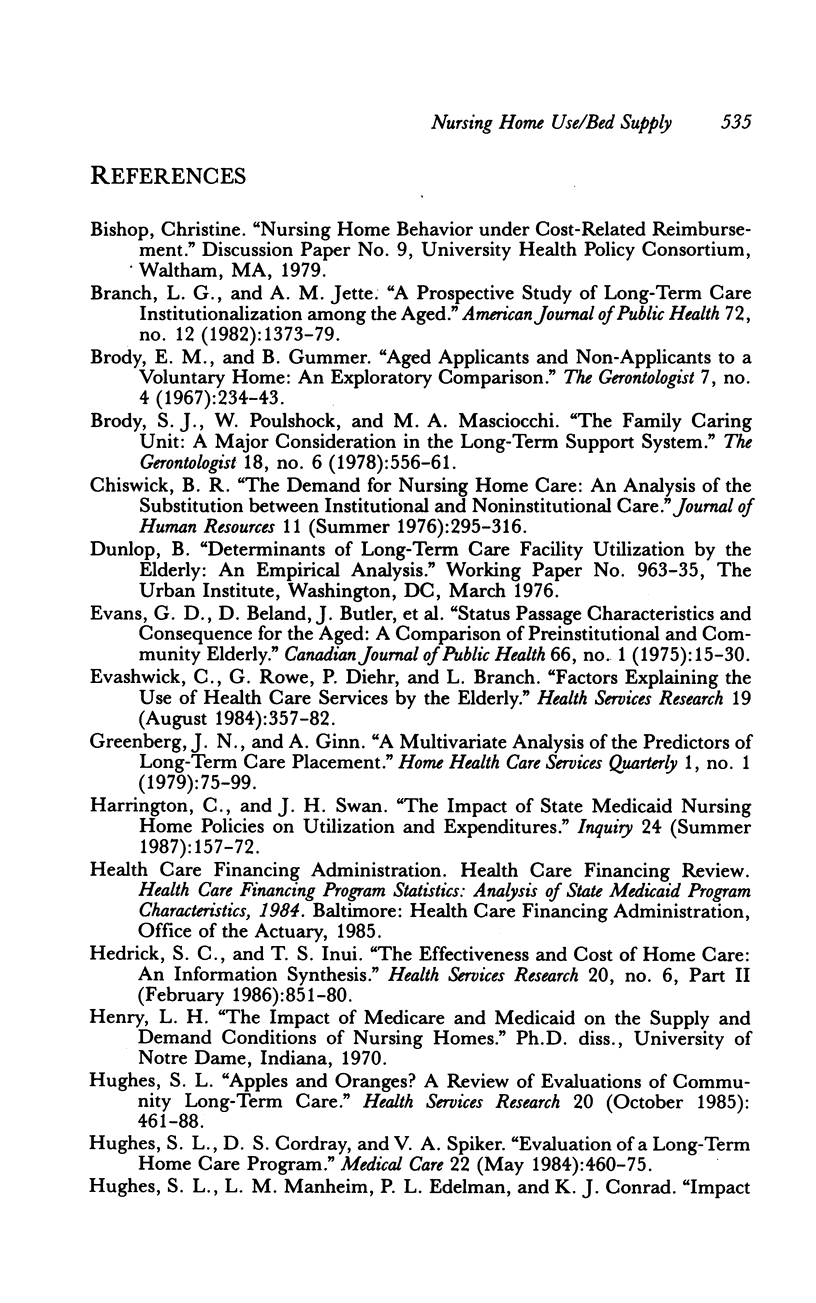
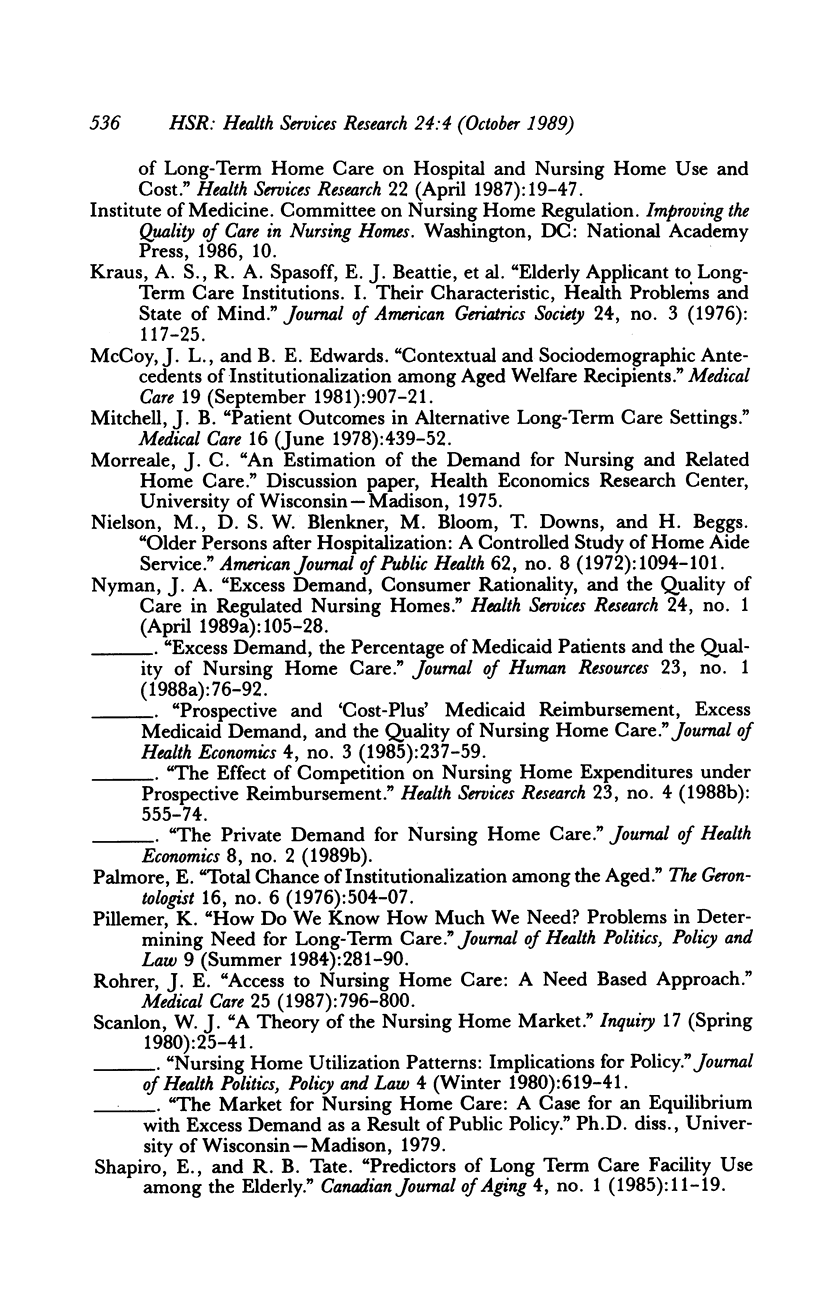
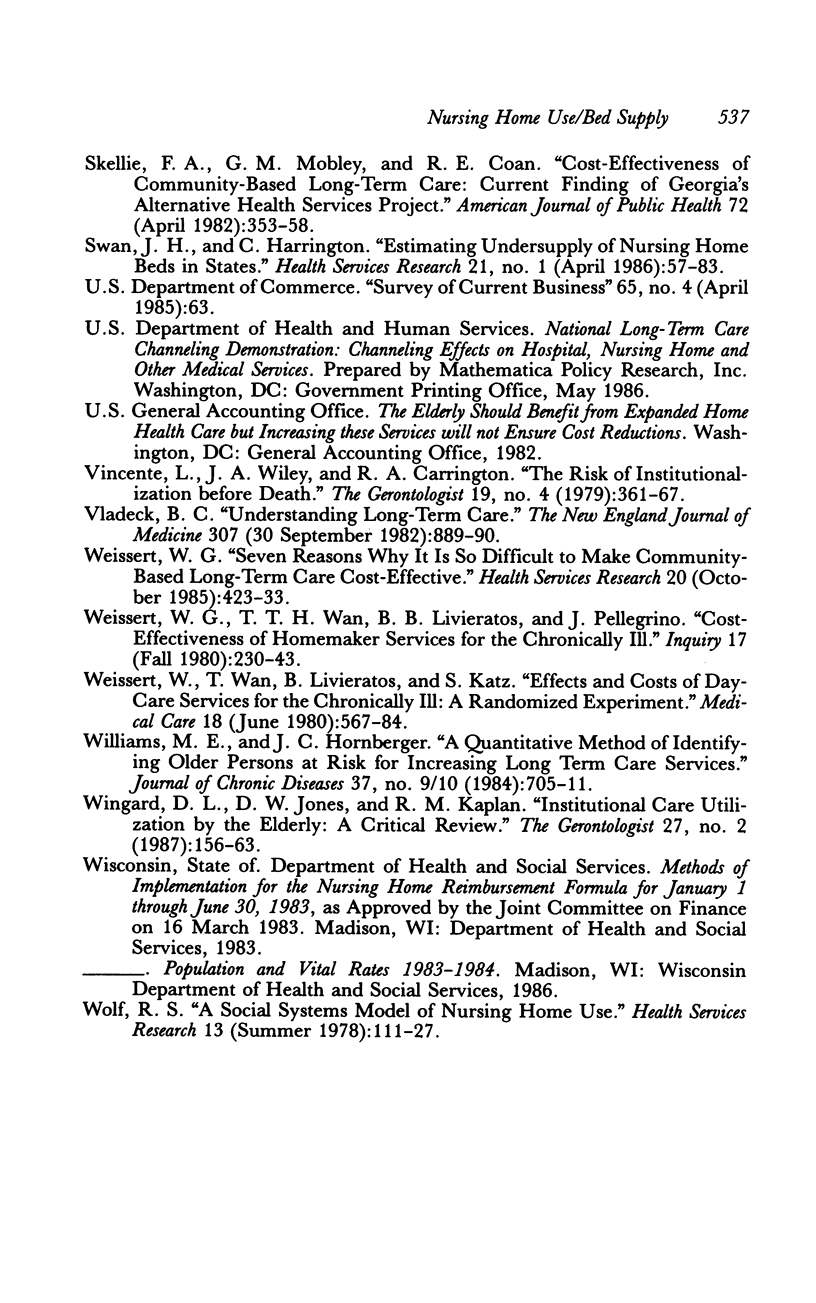
Selected References
These references are in PubMed. This may not be the complete list of references from this article.
- Branch L. G., Jette A. M. A prospective study of long-term care institutionalization among the aged. Am J Public Health. 1982 Dec;72(12):1373–1379. doi: 10.2105/ajph.72.12.1373. [DOI] [PMC free article] [PubMed] [Google Scholar]
- Brody E. M., Gummer B. Aged applicants and non-applicants to a voluntary home: an exploratory comparison. Gerontologist. 1967 Dec;7(4):234–243. doi: 10.1093/geront/7.4.234. [DOI] [PubMed] [Google Scholar]
- Brody S. J., Poulshock S. W., Masciocchi C. F. The family caring unit: a major consideration in the long-term support system. Gerontologist. 1978 Dec;18(6):556–561. doi: 10.1093/geront/18.6.556. [DOI] [PubMed] [Google Scholar]
- Evans G. D., Beland D., Butler J., Delongchamp N., Kroetsch K., Pearson J. U., Poling A. Status passage characteristics and consequences for the aged: a comparison of preinstitutional and community elderly. Can J Public Health. 1975 Jan-Feb;66(1):15–30. [PubMed] [Google Scholar]
- Evashwick C., Rowe G., Diehr P., Branch L. Factors explaining the use of health care services by the elderly. Health Serv Res. 1984 Aug;19(3):357–382. [PMC free article] [PubMed] [Google Scholar]
- Fox J., Care A. D., Swaminathan R. The use of a Thiry-Vella loop of jejunum to study the intestinal absorption of calcium and inorganic phosphate in the conscious pig. Br J Nutr. 1978 May;39(3):431–439. doi: 10.1079/bjn19780059. [DOI] [PubMed] [Google Scholar]
- Greenberg J. N., Ginn A. A multivariate analysis of the predictors of long-term care placement. Home Health Care Serv Q. 1979 Spring;1(1):75–99. doi: 10.1300/J027v01n01_04. [DOI] [PubMed] [Google Scholar]
- Harrington C., Swan J. H. The impact of state Medicaid nursing home policies on utilization and expenditures. Inquiry. 1987 Summer;24(2):157–172. [PubMed] [Google Scholar]
- Hedrick S. C., Inui T. S. The effectiveness and cost of home care: an information synthesis. Health Serv Res. 1986 Feb;20(6 Pt 2):851–880. [PMC free article] [PubMed] [Google Scholar]
- Hughes S. L. Apples and oranges? A review of evaluations of community-based long-term care. Health Serv Res. 1985 Oct;20(4):461–488. [PMC free article] [PubMed] [Google Scholar]
- Hughes S. L., Cordray D. S., Spiker V. A. Evaluation of a long-term home care program. Med Care. 1984 May;22(5):460–475. doi: 10.1097/00005650-198405000-00010. [DOI] [PubMed] [Google Scholar]
- McCoy J. L., Edwards B. E. Contextual and sociodemographic antecedents of institutionalization among aged welfare recipients. Med Care. 1981 Sep;19(9):907–921. doi: 10.1097/00005650-198109000-00003. [DOI] [PubMed] [Google Scholar]
- Mitchell J. B. Patient outcomes in alternative long-term care settings. Med Care. 1978 Jun;16(6):439–452. doi: 10.1097/00005650-197806000-00001. [DOI] [PubMed] [Google Scholar]
- Nielsen M., Blenkner M., Bloom M., Downs T., Beggs H. Older persons after hospitalization: a controlled study of home aide service. Am J Public Health. 1972 Aug;62(8):1094–1101. doi: 10.2105/ajph.62.8.1094. [DOI] [PMC free article] [PubMed] [Google Scholar]
- Nyman J. A. Excess demand, consumer rationality, and the quality of care in regulated nursing homes. Health Serv Res. 1989 Apr;24(1):105–127. [PMC free article] [PubMed] [Google Scholar]
- Palmore E. Total chance of institutionalization among the aged. Gerontologist. 1976 Dec;16(6):504–507. doi: 10.1093/geront/16.6.504. [DOI] [PubMed] [Google Scholar]
- Pillemer K. How do we know how much we need? Problems in determining need for long-term care. J Health Polit Policy Law. 1984 Summer;9(2):281–290. doi: 10.1215/03616878-9-2-281. [DOI] [PubMed] [Google Scholar]
- Rohrer J. E. Access to nursing home care. A need-based approach. Med Care. 1987 Aug;25(8):796–800. doi: 10.1097/00005650-198708000-00012. [DOI] [PubMed] [Google Scholar]
- Scanlon W. J. A theory of the nursing home market. Inquiry. 1980 Spring;17(1):25–41. [PubMed] [Google Scholar]
- Skellie F. A., Mobley G. M., Coan R. E. Cost-effectiveness of community-based long-term care: current findings of Georgia's alternative health services project. Am J Public Health. 1982 Apr;72(4):353–358. doi: 10.2105/ajph.72.4.353. [DOI] [PMC free article] [PubMed] [Google Scholar]
- Swan J. H., Harrington C. Estimating undersupply of nursing home beds in states. Health Serv Res. 1986 Apr;21(1):57–83. [PMC free article] [PubMed] [Google Scholar]
- Vicente L., Wiley J. A., Carrington R. A. The risk of institutionalization before death. Gerontologist. 1979 Aug;19(4):361–367. doi: 10.1093/geront/19.4.361. [DOI] [PubMed] [Google Scholar]
- Vladeck B. C. Sounding board. Understanding long-term care. N Engl J Med. 1982 Sep 30;307(14):889–890. doi: 10.1056/NEJM198209303071411. [DOI] [PubMed] [Google Scholar]
- Weissert W. G. Seven reasons why it is so difficult to make community-based long-term care cost-effective. Health Serv Res. 1985 Oct;20(4):423–433. [PMC free article] [PubMed] [Google Scholar]
- Weissert W. G., Wan T. T., Livieratos B. B., Pellegrino J. Cost-effectiveness of homemaker services for the chronically ill. Inquiry. 1980 Fall;17(3):230–243. [PubMed] [Google Scholar]
- Weissert W., Wan T., Livieratos B., Katz S. Effects and costs of day-care services for the chronically ill: a randomized experiment. Med Care. 1980 Jun;18(6):567–584. doi: 10.1097/00005650-198006000-00001. [DOI] [PubMed] [Google Scholar]
- Williams M. E., Hornberger J. C. A quantitative method of identifying older persons at risk for increasing long term care services. J Chronic Dis. 1984;37(9-10):705–711. doi: 10.1016/0021-9681(84)90039-0. [DOI] [PubMed] [Google Scholar]
- Wingard D. L., Jones D. W., Kaplan R. M. Institutional care utilization by the elderly: a critical review. Gerontologist. 1987 Apr;27(2):156–163. doi: 10.1093/geront/27.2.156. [DOI] [PubMed] [Google Scholar]
- Wolf R. S. A social systems model of nursing home use. Health Serv Res. 1978 Summer;13(2):111–128. [PMC free article] [PubMed] [Google Scholar]


